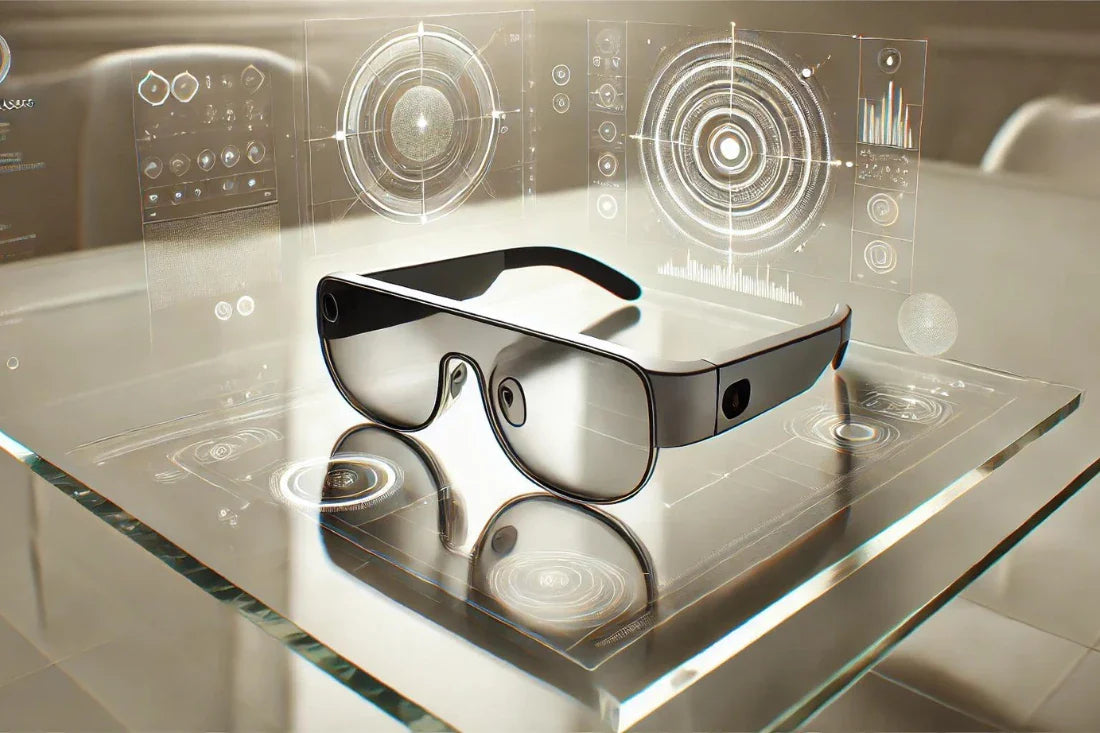Smart glasses are on the verge of becoming a mainstream wearable technology as we approach 2025. Combining cutting-edge innovations in augmented reality (AR), artificial intelligence (AI), and sleek design, smart glasses will enhance how we interact with digital information.
Whether used in professional industries, entertainment, or daily life, smart glasses are set to transform both work and play. Here’s everything you need to know about smart glasses in 2025 .
1. What Are Smart Glasses?
Smart glasses integrate digital technology with traditional eyewear, allowing users to interact with digital information in a hands-free, immersive way. Equipped with displays, cameras, sensors, and voice control, they project information directly into your line of sight.
These devices perform a wide range of functions, from providing real-time AR overlays to capturing photos and videos or assisting in hands-free communication.
2. Key Features of Smart Glasses in 2025
As technology evolves, the core features of smart glasses are improving:
Augmented Reality (AR): Smart glasses can project digital elements onto the real world, allowing users to see real-time data overlays. From navigation guidance to immersive gaming, AR enhances daily interactions by seamlessly blending the virtual and physical worlds.
AI-Driven Assistance: Built-in AI assistants, such as Meta's "Hey Meta" and Amazon's Alexa, offer hands-free control. Users can send texts, set reminders, make calls, translate languages, and control smart devices without lifting a finger.
Cameras and Video Recording: Many smart glasses are equipped with high-quality cameras for taking photos and recording videos, often used for social media, content creation, or even professional documentation.
Seamless Connectivity: Smart glasses connect wirelessly to smartphones and other devices through Bluetooth or Wi-Fi, enabling real-time data synchronization, notifications, and access to apps without interrupting daily tasks.

3. Use Cases for Smart Glasses
Smart glasses are finding a place across various industries and in everyday life:
Healthcare: AR-powered smart glasses allow doctors to view patient data, imaging, and remote consultations hands-free during surgeries or consultations. They are revolutionizing medical training and telehealth services by providing real-time, actionable information in the field.
Manufacturing and Industrial Use: Smart glasses are enhancing workplace efficiency by providing AR overlays for assembly lines, enabling workers to follow step-by-step instructions and perform remote troubleshooting with guidance from off-site experts.
Entertainment and Media: High-end models like Xreal Air 2s allow users to experience cinema-quality visuals by projecting AR displays directly in front of them, providing immersive entertainment for gaming, streaming, and virtual meetings.
Everyday Convenience: From hands-free navigation to real-time language translation, smart glasses are simplifying daily tasks. Users can navigate new cities, interact with social media, or manage schedules with a simple voice command, all without needing to reach for a phone.
4. Challenges and Innovations in 2025
While smart glasses have advanced significantly, some challenges remain:
Battery Life: Powering AR, AI, and cameras can drain the battery quickly. Manufacturers are working to improve battery efficiency through thinner lithium-ion batteries and power-saving features, extending the device's battery life for all-day use.
Display Quality: Displaying AR elements without making the glasses bulky has been a significant hurdle. New technologies, such as microLED and waveguide optics, are improving visual clarity without compromising the glasses' sleekness.
Privacy Concerns: The integration of cameras and AI in smart glasses raises privacy concerns, especially in public spaces. Manufacturers are addressing this issue by introducing privacy-focused features like face blurring in sensitive environments.

5. Top Smart Glasses to Watch in 2025
Several smart glasses models are expected to dominate the market in 2025. Here are some standout options:
Meta Ray-Ban Smart Glasses: These stylish Ray-Ban models combine Meta's cutting-edge technology with classic eyewear design. With features like live translation, video recording, and social media integration, they are perfect for tech-savvy fashion-conscious users.
Amazon Echo Frames: Designed with audio and smart assistant functionality in mind, Echo Frames integrate Alexa for voice commands, allowing users to make calls, listen to music, and control their smart home without distractions.
Xreal Air 2s: Leading in entertainment and media, the Xreal Air 2s offers a cinematic AR experience with high-definition visuals, ideal for gaming or video streaming on the go. The glasses create a virtual screen that only the wearer can see.
Vuzix M400: Tailored for industrial and enterprise use, the Vuzix M400 glasses feature AR overlays, data capture, and hands-free interaction, making them an invaluable tool for remote workers, field technicians, and medical professionals.
6. The Future of Smart Glasses: What’s Next?
The future of smart glasses looks incredibly promising. Some key trends and advancements expected to define the future include:
Enhanced AI and AR Integration: As AI continues to evolve, smart glasses will become more context-aware, delivering real-time, personalized information based on your surroundings and activities. Advanced natural language processing will also make voice commands more intuitive and useful.
Wearable Health Monitoring: Future smart glasses may integrate sensors for health tracking, monitoring vital signs like heart rate, blood oxygen, or glucose levels, positioning them as a valuable tool for personal health management.
Broader Market Adoption: With manufacturing costs decreasing and technology improving, smart glasses are projected to become more affordable, leading to mass-market adoption. The market is expected to reach $13.20 billion by 2032, with both consumer and enterprise applications driving growth.
Conclusion
As we move into 2025 , smart glasses are positioned to become a fundamental part of how we interact with the digital and physical world. With advancements in AI and AR integration, these devices will not only enhance personal convenience but also revolutionize industries like healthcare, manufacturing, and entertainment. The improvements in battery life, display quality, and privacy features are helping to address the current challenges, making smart glasses more appealing to a broader audience.
As prices continue to drop and design aesthetics become more refined, smart glasses are expected to enter the mainstream, offering a hands-free, immersive experience that blends the virtual with the real. Whether you're a professional looking to boost productivity or a consumer seeking seamless integration of technology into everyday tasks, smart glasses are set to become a must-have device by 2025 and beyond.





